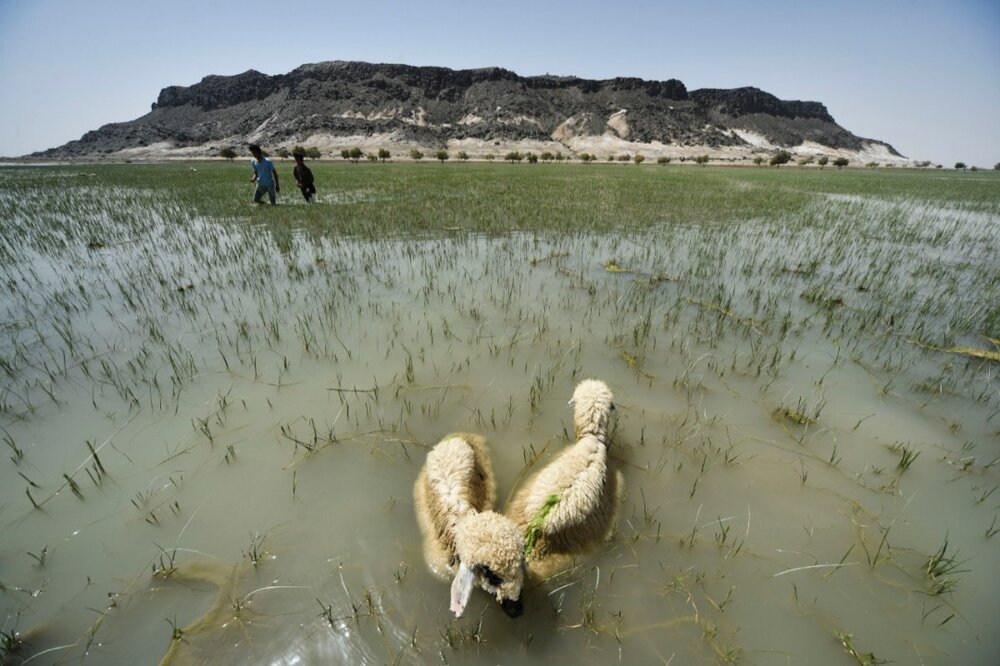UNDP supports efforts to conserve Iran’s wetlands

TEHRAN - The United Nations Development Programme (UNDP) is working closely with national and international development partners to conserve Iran’s wetlands.
Projects on the ground are informing best practices, improving systems, building capacities, and informing better national policies and plans, here are two examples:
Conservation of Iranian Wetlands Project (CIWP) is a joint initiative between Iran’s Department of Environment (DOE), the Global Environment Facility, the Government of Japan, and UNDP in Iran.
To date, the project has supported the introduction of integrated and participatory ecosystem-based approaches for the conservation of around 38 wetlands in Iran in more than 25 provinces.
Since 2014, together with the Government of Japan, UNDP have been supporting Lake Urmia restoration efforts. The project covers 202 villages in East and West Azarbaijan provinces.
To date, the following results have reached while working with around 14,000 farmers:
* Over 25% water saving for irrigation
* Over 55% reduction in the use of chemical fertilizers and pesticides
* Sustainable solutions and job generation with the aim of reducing pressure on water resources & economically empowering local women
New three-year cooperation between the DoE, Japan, and UNDP Iran has been initiated to up-scale successful practices to additional pilots in Lake Urmia basin and two new replication sites including Shadegan and Bakhtegan Wetlands.
Alongside this, UNDP Iran is implementing the Sistan Project – a joint initiative between the DoE, other national partners, and the European Union’s Department of International Partnerships (DG INTPA) to boost socio-economic development in Sistan-Baluchestan province, restore Hamoun Wetlands and promote alternative climate-smart livelihoods.
To date, the following has been achieved:
* 120 project pilot sites have been selected.
* A comprehensive study has been conducted to analyze the area’s potential for the use of renewable energies. In accordance with the findings of this study, a practical business plan for four priority actions including renovation of solar power panels in the region, the establishment of a training center for renewable energy, supporting the establishment of biogas site besides husbandry breeding is under development.
* The inhabitants of Takhtaks (small islands inside the dried wetlands that raise Sistani Cow) were equipped with water transport and storage tankers, portable solar panels for lightening purposes, and livestock sanitary items to enhance their resilience in extreme weather conditions.
* The process for implementation of Quick Win projects towards capacity development of local entities (NGOs and CBOs) has started and 14 projects have been approved by national partners in line with the region’s development priorities.
The Hamouns are transboundary wetlands on the border of Iran-Afghanistan and cover three lakes. The wetlands have always been a unique ecosystem of critical local, national and international importance with ecological and socio-economic values. However, due to the acceleration of climate change, mismanagement of water resources, use of traditional irrigation systems by the local farmers, and lack of a formal agreement between Iran and Afghanistan, the once fertile wetlands have dried up drastically in the past two decades.
A bordering province with Afghanistan, UNDP Iran will continue to work closely with national and international partners to enhance the capacity and resilience of the refugee-hosting community.
February 2nd marks World Wetlands Day.
Wetlands cover around 6 percent of the Earth’s land surface and 40 percent of all plant and animal species live or breed in wetlands.
Wetlands play an important role in coastal environments-economies: health, food supply, tourism, and jobs. Wetlands are providing essential ecosystem services such as water regulation, including flood control and water purification.
More than a billion people across the world depend on wetlands for their livelihoods – that’s about one in eight people on Earth.
However, wetlands are among the ecosystems with the highest rates of decline, loss, and degradation.
Wetlands are disappearing three times faster than forests and are Earth’s most threatened ecosystem. In just 50 years — since 1970 — 35% of the world’s wetlands have been lost.
MG
Leave a Comment